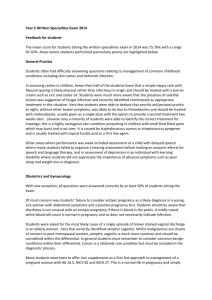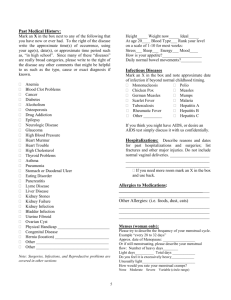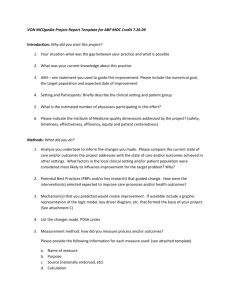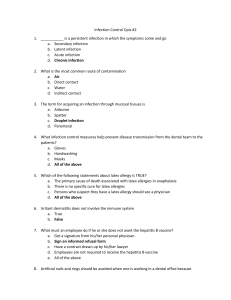Objectives - Goodsamim.com
advertisement
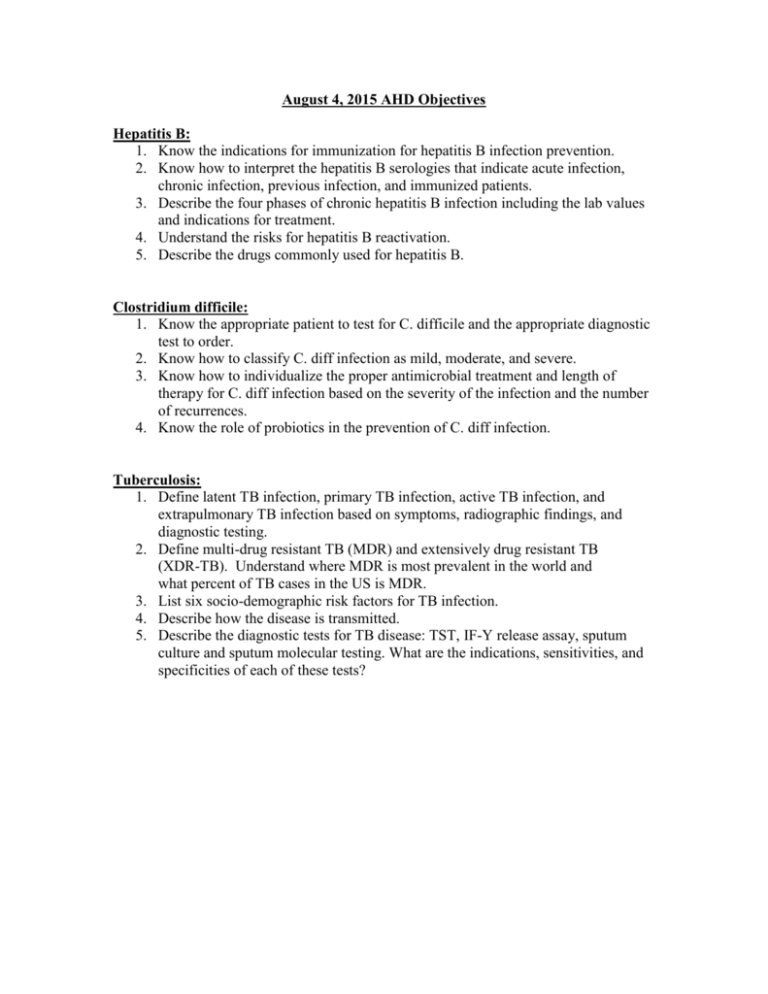
August 4, 2015 AHD Objectives Hepatitis B: 1. Know the indications for immunization for hepatitis B infection prevention. 2. Know how to interpret the hepatitis B serologies that indicate acute infection, chronic infection, previous infection, and immunized patients. 3. Describe the four phases of chronic hepatitis B infection including the lab values and indications for treatment. 4. Understand the risks for hepatitis B reactivation. 5. Describe the drugs commonly used for hepatitis B. Clostridium difficile: 1. Know the appropriate patient to test for C. difficile and the appropriate diagnostic test to order. 2. Know how to classify C. diff infection as mild, moderate, and severe. 3. Know how to individualize the proper antimicrobial treatment and length of therapy for C. diff infection based on the severity of the infection and the number of recurrences. 4. Know the role of probiotics in the prevention of C. diff infection. Tuberculosis: 1. Define latent TB infection, primary TB infection, active TB infection, and extrapulmonary TB infection based on symptoms, radiographic findings, and diagnostic testing. 2. Define multi-drug resistant TB (MDR) and extensively drug resistant TB (XDR-TB). Understand where MDR is most prevalent in the world and what percent of TB cases in the US is MDR. 3. List six socio-demographic risk factors for TB infection. 4. Describe how the disease is transmitted. 5. Describe the diagnostic tests for TB disease: TST, IF-Y release assay, sputum culture and sputum molecular testing. What are the indications, sensitivities, and specificities of each of these tests?


